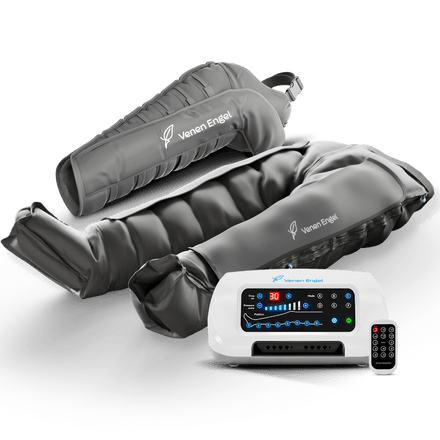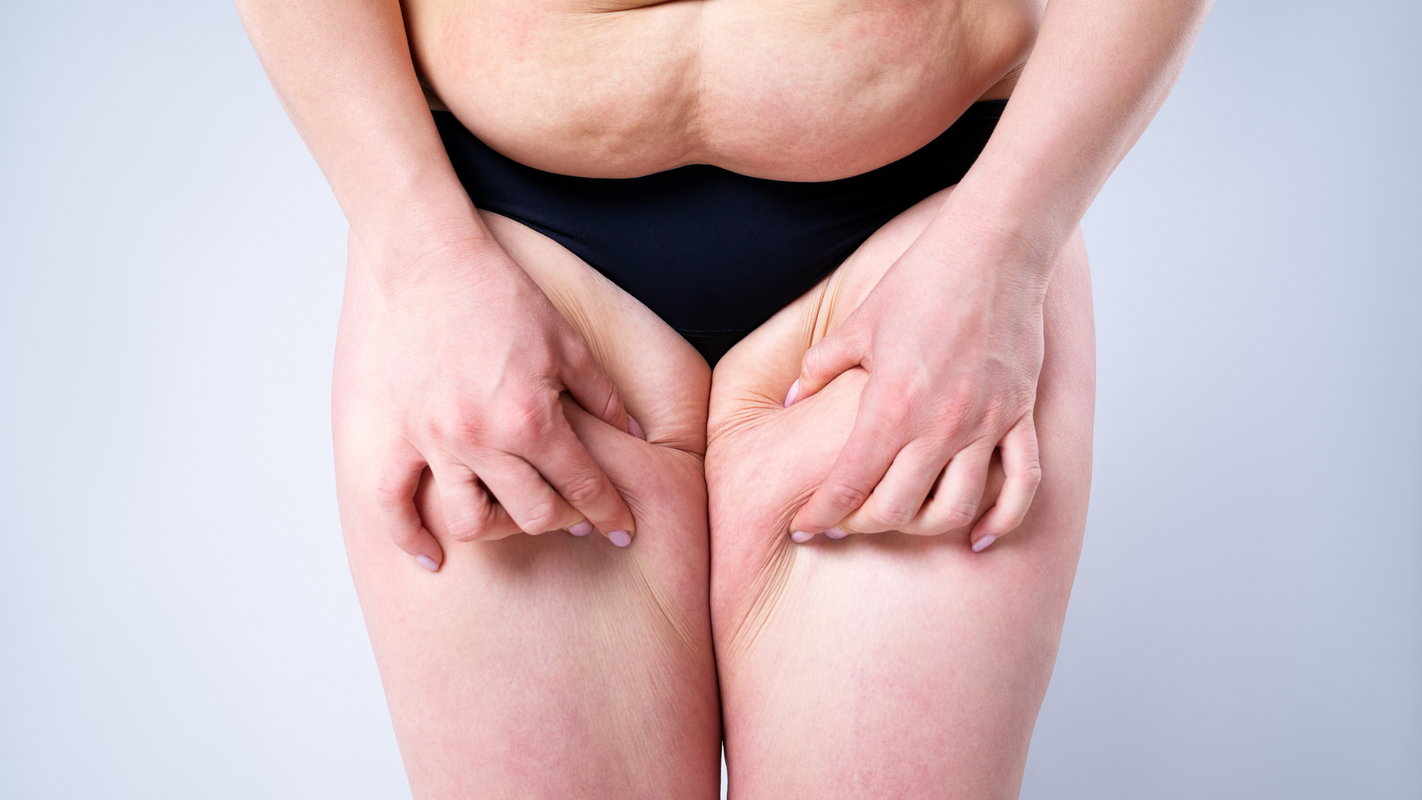If you've been affected by lymphedema, you've certainly noticed how your your daily life has changed: physical changes, new challenges and maybe even and maybe even limitations are suddenly part of your everyday life. You may also have noticed that you don't always get the understanding and help from those around you that you want and help that you would like to receive. This is often due to the fact that this disease is not yet sufficiently is not yet sufficiently understood in our society
Together we have the opportunity to change something here. We want to raise Raise awareness of the disease lymphedema by addressing the causes and symptoms and symptoms and provide practical tips for everyday life. In this way we want to help improve your well-being and make your everyday life easier your everyday life easier.
What is lymphedema?
Lymph is an essential body fluid whose importance is often underestimated. Every day, about two to three liters of this valuable fluid are created in the spaces between our cells. Lymph originates from the blood capillaries and is forced out of the blood vessels by increased pressure. About ten percent of this interstitial fluid then flows away as lymph.
In lymphedema, however, it can happen that more fluid enters the tissue than can be removed via the lymphatic channels. As a result, the lymph accumulates and the affected tissue swells. It is of great importance to recognize and treat lymphedema at an early stage in order to avert possible greater damage. If you notice the first signs of lymphedema, it is crucial to see a doctor immediately to initiate appropriate therapy and thus preserve your quality of life.

What are the causes of lymphedema?
Lymphedema can affect the lives of those affected and occurs in two different forms: primary and secondary lymphedema. The causes of both forms can be different, and here we would like to explain them in an easily understandable way.
-
Primary lymphedema
Primary lymphedema results from congenital problems in the lymphatic system that can can occur in a variety of ways. These include, for example, not having enough lymph vessels, missing lymph nodes, or unusually shaped lymph vessels.
Sometimes these problems are hereditary, but often they are random Changes in the genetic makeup that lead to incomplete development of the Lymphatic system. It is important to know that primary lymphedema can be very variable, and symptoms can vary from person to person can.
-
Secondary lymphedema
Most lymphedema, about 95 percent, is secondary lymphedema. They arise in the course of life due to damage to the lymphatic system, often as a result of of medical interventions such as surgery or radiation in the case of Cancer therapies. A tumor itself can also be the trigger for secondary lymphedema Lymphedema be.
During an operation to remove a tumor, sometimes the nearby lymph nodes are removed. This can affect the flow of lymph and cause secondary lymphedema. Radiation during cancer treatment can also damage the lymph nodes and vessels, as can major surgical procedures after a serious accident.
In some cases, secondary lymphedema can occur even without surgery or Radiation, when a cancerous tumor compresses or completely destroys the existing lymphatics or destroys them completely. In such situations, one speaks of a so-called malignant lymphedema.

Symptoms of lymphedema
Lymphedema can occur in different ways and affect different parts of the body. Primary lymphedema is often bilateral and mainly affects the legs. Secondary lymphedema, on the other hand, usually occurs on only one side and is localized, depending on the underlying disease or injury.
Signs of lymphedema
Typical signs of lymphedema are swelling in the affected areas of the Body parts, which can initially improve if you put your legs up. When you press on the swollen areas, a small dent remains. Affected people may also feel a sensation of heaviness, tension or pressure, become more quickly tired and notice changes in the moisture content of the skin and an increased tendency to bruise to bruising notice.
Swelling may begin in the morning and worsen throughout the day. In an advanced stage, the skin may harden and skin folds or furrows may or furrows may become deeper. In the case of secondary lymphedema, there may be additional blood circulation may occur, causing blood vessels to become clearly visible under the swollen and and hardened skin. In the case of malignant lymphedema, which is caused by a cancerous tumor, severe pain, paralysis, and open open areas (ulcerations) may also occur.
There are many other signs that may indicate lymphedema, and it is important to recognize them. Here are some possible symptoms:
Heavy and aching legs
Tight clothing or jewelry that is uncomfortable on the hands or feet
are
A heavy and tense feeling, as well as pain or insensitivity in the affected area
Hardened, taut skin that may show wart-like growths and skin folds and may become discolored or red
Sometimes fluid may leak from the skin (lymphorrhea)
Skin infections, such as erysipelas, may occur
Limited mobility and range of motion of the affected body part
It is important to know that the symptoms of lymphedema over time can vary. Without treatment, swelling can persist permanently and the affected body part may feel hard and firm without the swelling going down overnight Swelling goes down overnight. If you suspect that you might have lymphedema may have lymphedema, it's important to see a doctor to get a diagnosis and begin the best possible treatment.
Diagnostic procedure
When diagnosing lymphedema, your doctor will first take your medical history and possible surgeries into consideration. He or she will then examine the affected area to look for typical swelling and skin changes And skin changes. By palpating the edema, the doctor can determine if the tissue has Tissue has already hardened.
Another examination procedure is called Stemmer's sign, in which the doctor tries to lift the skin on the tops of your fingers or toes, to see if wrinkles are forming. A nuclear medicine exam, such as the Lymph Scintigraphy, can help visualize lymphatic drainage and possible drainage obstructions.
Depending on the suspected cause, further investigations may be required may be required, such as magnetic resonance imaging with contrast medium (MRI) or genetic testing. Early diagnosis and treatment are to slow the progression of lymphedema and avoid complications Avoid complications.

Treatment
Many people who suffer from lymphedema wonder if it can be cured. While the abnormal swellings cannot always be completely cured, proper treatment can at least reduce them significantly.
A combination of compression therapy, lymphatic drainage, exercise training and skin care is recommended. A balanced diet and adequate exercise can also be helpful. It is important to know that lymphedema therapy can be time-consuming and not always easy, especially in the beginning. Nevertheless, the patient's cooperation is crucial to avoid complications such as inflammation.
Compression therapy: This involves applying gentle pressure to the lymphatic vessels with the aid of Compression stockings or arm bandages.
-
Lymphatic drainage: This is a special massage technique performed by trained physiotherapists is carried out. It aims to improve the improve the disturbed lymph flow and reduce the accumulation of fluid in the tissues to reduce.
A variation of lymphatic drainage is sliding wave massage. This is carried out by special devices and promotes by means of pressure waves the blood circulation and the lymph flow. Especially with medically certified devices, significant Effects can be observed. They can reduce swelling, alleviate pain and remove as well as remove accumulated fluid from the tissue.
Exercise: Targeted exercise supports the muscles, which act like a Pump supports the lymphatic vessels in the removal of tissue fluid. Suitable sports include swimming, cycling or walking. Yoga and stretching exercises can also be helpful. However, avoid sports with jerky movements of the affected arm or leg, such as tennis, soccer, Rowing, mountain climbing and skiing.
Skin care is important to keep the affected skin areas supple and cared for.
There are no medications that work directly against lymphedema. Dietary supplements such as omega-3 fatty acids or bromelain may be useful in some cases, as they help to inhibit inflammation that is associated with lymphedema, but it is recommended to talk to a speaking with a physician.
- Nutrition: Make sure you eat a balanced diet with plenty of vitamins, minerals and fiber. Reduce salt to minimize water retention and drink enough water to dehydrate the body. A selection of the following foods has worked very well: Whole grain products,
lean meats, fish, legumes, nuts, plenty of vegetables and fruits. Processed foods should rather be avoided. They often contain large amounts of salt and sugar, which can aggravate inflammation and provide more water retention.

Some additional therapy approaches such as deep oscillation or Nutritional supplements can be helpful, but should always be discussed with a doctor be discussed. If conservative measures are not sufficient, surgery may be considered Be considered. Various methods can be used, depending on the cause of the lymphedema. Liposuction or reduction of the affected areas may also be affected areas may also be helpful in some cases.
Everyday tips for those affected
For people with lymphedema, there are some general tips for self-care and everyday management to better control lymphedema:
For flat feet or splayed feet, orthopedic insoles have been found to be very helpful.
Overweight can worsen the symptoms of lymphedema, so it would be advisable to pay attention to a healthy diet and do the recommended exercise to get down to the ideal weight.
It is also helpful to avoid sauna visits, sunbathing, tanning beds, infrared radiation and hot baths.
If you have a planned pregnancy, it would be advisable to consult with a vascular specialist.
To avoid frost damage, you should protect yourself from the cold.
It is also recommended to avoid prolonged and severe bending of the legs and crossing of the legs, as this will also aggravate the symptoms.
Kneading massages of the leg are not recommended.
It would be advisable to avoid medical interventions on the affected leg such as injections, blood and tissue sampling, acupuncture, and strenuous physical therapy unless absolutely necessary.
It can also be very helpful and beneficial to keep the affected leg elevated at night.
To get a comfortable feeling, we recommend wearing comfortable underwear with a leg and rather avoiding cutting briefs or tight belts.
It would also be wise to get used to new shoes carefully and avoid tight or high-heeled shoes, as these can make symptoms worse. Outside the home, you should rather not go barefoot.
Summary
It is important to be well informed about lymphedema and to know how to manage Manage everyday life with this disease. Personal responsibility and suitable aids can significantly improve the quality of life of those affected. Regular exercise, a healthy diet and appropriate wellness treatments such as sliding wave massage are crucial for the relief of complaints.
If you need more information or are looking for professional help, there are Medical specialists, physical therapists and nutritionists available. Get advice from Experts to find out which measures are best suited for your individual Best suited to your individual situation. Together we can improve the quality of life for People with lymphedema and support them in their everyday lives.




